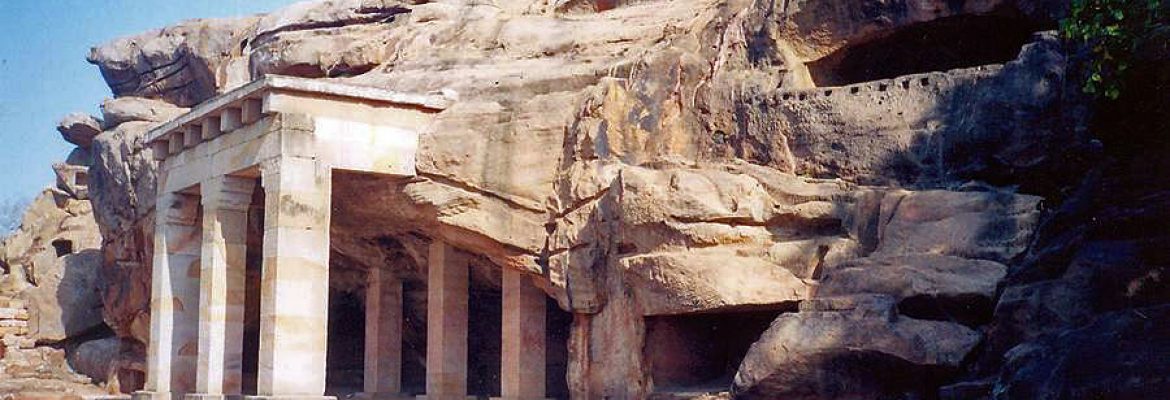Khandagiri Caves, Odisha, India
Six kilometres west of the city centre are two hills riddled with rock-cut shelters. Many are ornately carved and thought to have been chiselled out for Jain ascetics in the 1st century BC.
Ascending the ramp at Udayagiri (Sunrise Hill), note Swargapuri (Cave 9) to the right with its devotional figures. Hathi Gumpha (Cave 14) at the top has a 117-line inscription relating the exploits of its builder, King Kharavela of Kalinga, who ruled from 168 to 153 BC.
Around to the left you’ll see Bagh Gumpha (Tiger Cave; Cave 12), with its entrance carved as a tiger mouth. Nearby are Pavana Gumpha (Cave of Purification) and small Sarpa Gumpha (Serpent Cave), where the tiny door is surmounted by a three-headed cobra. On the summit are the remains of a defensive position. Around to the southeast is the single-storey elephant-guarded Ganesh Gumpha (Cave 10), almost directly above the two-storey Rani ka Naur (Queen’s Palace Cave; Cave 1), carved with Jain symbols and battle scenes.
Continue back to the entrance via Chota Hathi Gumpha (Cave 3), with its carvings of elephants, and the double-storey Jaya Vijaya Cave (Cave 5), with a bodhi tree carved in the central area.
Across the road, Khandagiri offers fine views over Bhubaneswar from its summit. The steep path splits about one-third of the way up the hill. The right path goes to Ananta Cave (Cave 3), with its carved figures of athletes, women, elephants and geese carrying flowers. Further along is a series of Jain temples; at the top is another (18th-century) Jain temple.
Buses don’t go to the caves, but some go close (Bus 801 to Baramunda bus stand, for example). A shared/private autorickshaw shouldn’t cost much more than ₹20/200.
Visit India Epic India Route © Monika Newbound


